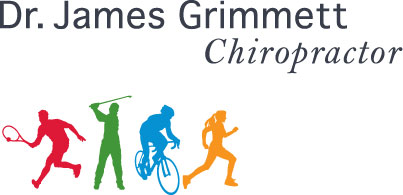Let’s jump right into this by asking what is the goal of the push up exercise? I always want to know why I am doing an exercise. For the push up a common answer might be, “to work my chest”. O.K.
Let’s then ask what are the risks from the push up. There are two concerns that come to mind.
First, should you have forward head carriage and rounded shoulders the push up is likely to contribute to this postural fault.
Second, the push up is a closed chain exercise for the upper extremity. Google closed chain should you want to learn more about this phenomenon. What this boils down to is that this will shut down the activity of the rotator muscle group. The principle function of the rotator cuff is to help keep a key shoulder joint properly positioned. Without the rotator cuff the shoulder is likely to be poorly positioned. This is not good at any time but is worse when load is added such as in a push up. It is for the same reason why a straight bar bench press is not advised.
To add support to this dysfunctional impact is the early osteoarthritic changes in a shoulder joint called the acromioclavicular joint (AC joint). The arthritis arises from the shear stress on the poorly positioned AC joint from repetitive pushing with load. The AC joint is the most common joint to show early arthritic changes in the body. Even advanced arthritic changes in this joint have been confirmed on x-rays in weight lifters under 30 years of age.
Furthermore, this poorly positioned shoulder in the push up predisposes the shoulder to several other common types of tendon and muscle strains. Examples of these include forms of impingement syndromes and rotator cuff tendonopathies such as tendonitis.
This all said, if you are doing a few push ups in a bootcamp or cross fit class this part of the workout is not likely to be a concern if the following is observed:
there is no existing shoulder injury or pain
you have been educated on proper technique
To help insure proper technique you should be focused on your posture . The cues for proper standing should be employed with special attention to the hand positioning. The hand should be identical to that of the baby’s crawl. I know the push up is a floor exercise but your body should still be engaged as if it was standing with additional effort for fighting the gravitational demand of being horizontal.
From an observational standpoint it is rare for me to see the push up being executed properly. Instead what is typically seen is poor posture and the subsequent poor movement pattern that follows. Put simply, push ups like this are likely to contribute to poor posture and increase the likelihood of a shoulder injury.
If the goal is to work the chest muscles, like any exercise, this should be performed from global good posture. And from this good posture in the case of the push up the movement comes from the shoulder girdle. Benefiting from this would not only be the chest muscles that move and support the shoulder but other muscles that do the same as well as others that help to hold the body in good alignment. Really a very global benefit when considering the musculature (and fascia).
Examples of good posture with movement are the likes of Usain Bolt in sprinting or Roger Frederer in Tennis. Usain Bolt in the sprint holds his torso near rigid as his locomotion comes from his hips and shoulders. Paralleling this stable torso would be Roger Frederer at the instant of contact when hitting the ball.
Back to the push up I would suggest less of a demanding exercise but with the same objectives. For example if you do a bench press exercise with individual dumbbells you now have an open chain exercise. This allow the centering of the shoulder joint from the rotator cuff muscles and is less demanding on posture. Working the chest this way is likely to reap the desired benefits. As mentioned above this would strengthen the chest muscles but also many more muscles that help to hold the body in good alignment. The individual dumbbell bench press also helps avoid the pitfalls commonly associated with the push up.
Just doing an exercise does not guarantee safe results. You still need good form and this holds true for the dumbbell exercise described above.
To help ensure you are achieving the desired benefits of any exercise you should always feel you are making progress. Certainly there should not be any pain such as in the shoulder during or shortly after the exercise. Pain should always be interpreted as a red flag to stop the exercise.
